Shiromani Akali Dal: 100 years of a Political Party -Rise and Fall
![When was the last time you heard the humbling Akali cry of commitment –“Main maran, Panth jeeve” -Let Panth live, I am ready to die, asks writer-activist Jagdeesh Singh as he pinpoints salient features of the rise and fall of the Akali Dal -from a vibrant, vigorous, Panthic, fighting vanguard, to its decay and descent into a current day anti-Panth, anti-Panjaab, single-family outfit, with multiple factions which also do not adhere to the glorious democratic traditions of the party. The […]](https://www.theworldsikhnews.com/wp-content/uploads/2020/10/Master-Tara-Singh-360x266.jpg)
When was the last time you heard the humbling Akali cry of commitment –“Main maran, Panth jeeve” -Let Panth live, I am ready to die, asks writer-activist Jagdeesh Singh as he pinpoints salient features of the rise and fall of the Akali Dal -from a vibrant, vigorous, Panthic, fighting vanguard, to its decay and descent into a current day anti-Panth, anti-Panjaab, single-family outfit, with multiple factions which also do not adhere to the glorious democratic traditions of the party. The WSN columnist examines the contribution of Shiromani Akali Dal in the context of its relationship with the people of Panjaab and its changing politics within the Indian polity.
AS WE APPROACH THE 100TH FOUNDATION DAY OF THE SHIROMANI AKALI DAL ON 14 DECEMBER 1920, it is time to look at the journey of a party which once championed the community and endeavoured to secure a political position for the Sikhs during the tumultuous partition of the Indian subcontinent in 1947.
This well-known political organisation with the Panth and Panjaab, today on its 100th anniversary, stands in clear crisis and the widespread sense of disenchantment and disaffection across both the Panth and Panjaabis. Post-1984, this once glorious organisation formed through intense struggles and sacrifices, has become contaminated and scandalised for being dominated and singularly controlled by the Badal family and being made into an entirely personalised instrument for the Badal political empire and self-interest.
Post-1984, the story of the ‘Shiromani Akali Dal’ has been one of failure, betrayal and scandal; in sharp contrast to its staunch, agitating, campaigning, patriotic, pro-Panth, pro-Panjaab pre-1984 character.
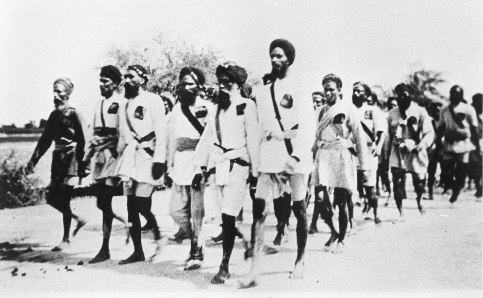
The decision to form the Akali Dal as a political body for the representation and advocacy of Sikh concerns and aspirations, in December 1920, came about from the clearly growing and rapidly emerging consciousness amongst Sikh activists and leaders in response to their acutely subjugated and stateless position as a political ‘minority’ under British India.
The Sikhs needed and the circumstances necessitated a political body to project their point of view in the prevailing British power structure. Having been rendered a totally-subjugated and subdued nation with the British-Indian empire (after the intense British-Panjaab wars of 1845-1849), the Panjaabi-Sikh nation was now at the mercy and misery of whatever the British Indian establishment wanted to do.
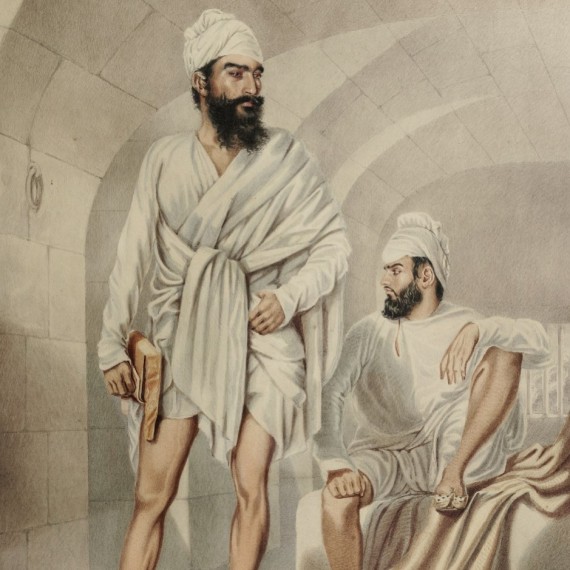
Following the post-1849 decades of intense struggle and resistance to retrieve their stolen sovereign statehood by the likes of Bhai Maharaj Singh, Bhai Kharag Singh, Kuka Lehar, et al, and the occupying British power which wanted to crush any idea of a return to an independent Panjaab. The Panjaab and Panth appear to have settled into a subdued acceptance of its conditions of subjugation and statelessness. This was followed by phases like the Singh Sabha Lehar (in the late 1800s) and then the Gurdwara Sudhar Lehar (1900-1925 circa). Alongside, came the radical, pro-independence Gadhr Lehar and the Babbar Akali Lehar between 1910-1920 circa.
Into this mix, emerged the formation of the ‘army of immortal’ Sikhs, with their iconic Khalsa blue turbans (banned post-1849 by the British power). The daring and fiery ‘Akali Dal’ took its title and symbolism from the blue-attired Akali Nihangs who have fearlessly fought for the Panth for centuries beforehand and from their defiant bravery in the Khalsa Army which fought the incoming British encroachers during the 1845-1849 wars.
The British had seen the colour blue in battle. It had made a devastating imprint on the British psyche, who subsequently banned it altogether together with the Akali Nihang damalla -vivid, staunch circular turban, and the entirety of Akali Nihang life and existence in the land of Panjaab which they had seized and occupied.
Akaali Nihang Singhs
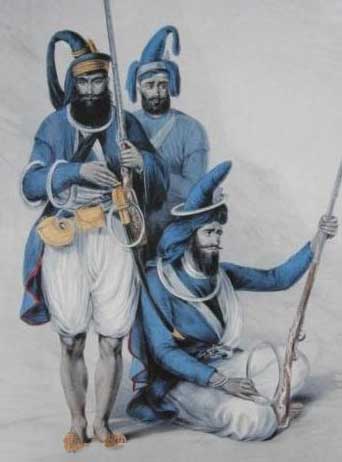
The Nihang vanguard of Panjaab was physically dissipated, dispersed and defeated, though the innate feelings raged on inside. The British thought that they had broken the blue spirit of the Sikhs and Panjaab. Patriotism can be suppressed, but not destroyed. The same vigorous blue colour re-emerged in the formation of the Akali Dal in 1920. A historic step forward for Sikhs and Panjaab.
This army of reborn Akalis was going to fight with the same passion and intensity for Sikh rights and protection, which the preceding Akali Nihangs had done.
The Akali Dal, later adopting the name of ‘Shiromani Akali Dal’, rapidly became a growing force in Panjaab.
Unfortunately, rather than trying to unite and combine all Panjaabis away from the divisions which the British imperialists had implanted, through their devious divide and rule and fragment methodology; the Akali Dal appeared to have adopted that same sectarian state of affairs. It became predominantly and singularly a party for the Sikhs, rather than all Panjaabis.
A critical flaw, which would affect its direction and progression over the coming decades. Sikhi is unifying force for all Panjaabis; and a demonstrable saviour for all Panjaabis. However, we had become victims of British colonial games.
Unfortunately, rather than trying to unite and combine all Panjaabis away from the divisions which the British imperialists had implanted, through their devious divide and rule and fragment methodology; the Akali Dal appeared to have adopted that same sectarian state of affairs. It became predominantly and singularly a party for the Sikhs, rather than all Panjaabis.
Over the ensuing decades, the Shiromani Akali Dal fought various campaigns with the British establishment, securing various piecemeal concessions. In the messy and chaotic 1946-1947 British Transfer of Power process, it was rendered into a secondary and inconsequential voice by the British establishment who was primarily and predominantly concerned with securing an easy, uncomplicated and rapid exit strategy from an increasingly redundant, burdensome and failing British Indian empire. The Akali Dal came out of the whole gigantic mess of 1947 in a dejected and demoralised manner, with the devastating damage done to Sikh lives and Panjaab as a whole.
Handing power en bloc to a single Indian National Congress political elite, to do as they please with the mass-scale subcontinent Indian empire that the British had forged in the first place by conquering and subsuming so many independent territorial nations: this would have been the easiest and most convenient option for the outgoing British. However, the numerically strong, vocal and violent Muslim League-led Muslims were not going to let such a ‘one-nation’ India happen. They aggressively insisted on their ‘two-nation’ policy of a Hindu India and Muslim Pakistan divide, or fire and fury would take place – which it did all the same!
This preceding journey of the Akali Dal should provide Sikhs and Panjaabis with key lessons and opportunities to form a new ethical-political force – one which is democratically and popularly engaged with all sections and strands of the Panjaabi nation -women, Dalits, Kisans, Sikhs and Panjaabi trading classes.
The numerically minute Sikhs were viewed simply as an irritant and nuisance in this whole scheme.
The cries of injustice and demands for ‘Azad Panjaab’, a return of Panjaabi statehood and Sikh statehood met with wholesale rejection from the British, Hindu Indian National Congress and Muslim League. Panjaab and the Sikhs were on their own, at the mercy of these bigger forces.
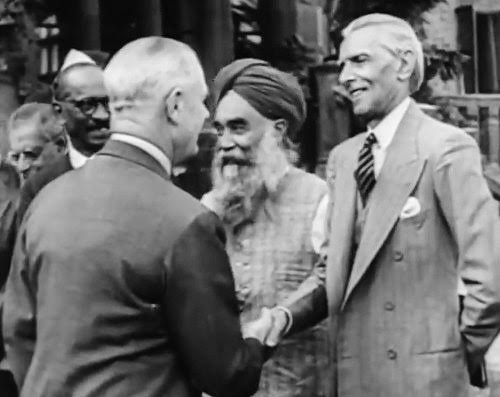
The British conceded to this relatively easy option of drawing lines across the map of South Asia and creating the twin states of India and Pakistan. The ‘minority’ Panjaab and many other regional nations, did not matter. They could be dealt with by the successor states. The outgoing British had no time to waste or fuss over them.
The Akali Dal came through this bitter, genocidal, partition episode; battered and beleaguered. It had failed to secure anything for the Sikhs -victims of the British power games and exit strategies.
From 1947 onwards to 1984, the Akali Dal struggled bitterly with the new trenchant power of India for justice and rights for Sikhs and Panjaab. It continued in the limited and restrictive groove of being a political party for Sikhs, rather than for all Panjaabis.
Come the culminating events of June 1984, with the Indian state’s two-pronged final solution to the burning Sikh question, in the form of two phases of the genocidal onslaught. Firstly, directly on the Sikh population inside Panjaab. Then, in November 1984, on the Sikh population in Delhi and other major Sikh hotspots around India.
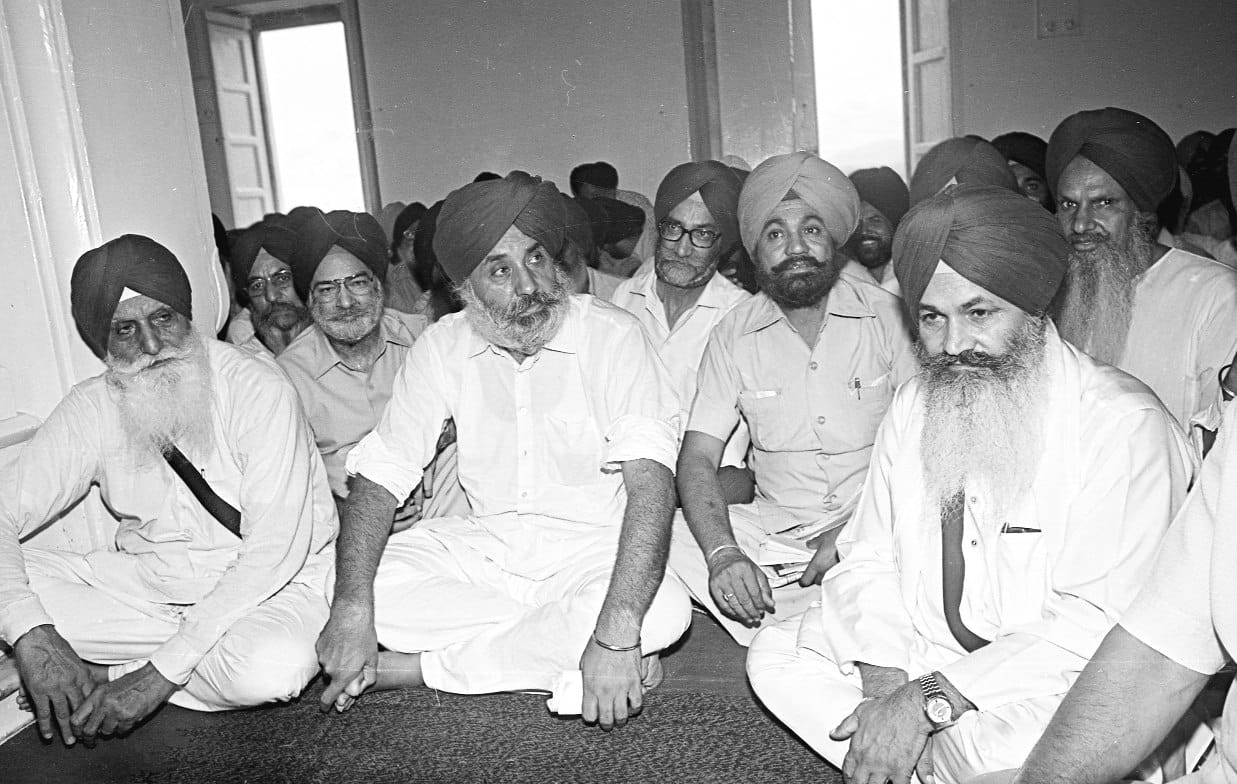
In the iconic events of June 1984, whilst the heroic figures like Sant Jarnail Singh Bhindranwale and his colleagues vowed to die fighting the Indian army onslaught on the holiest and most sovereign institution of Panjaab and the Panth; the lead figures of the Akali Dal – Harchand Singh Longowal, Balwant Singh Ramoowalia, Parkash Singh Badal, Gurcharan Singh Tohra, signally surrendered themselves into the safe custody and incarceration of the Indian state. None of them died. None were tortured. They were released to continue their political spree on Panjaab, with Badal emerging as the most prolific and prominent.
It was from that critical juncture, that we see the spiralling downfall of the once radical, determined and dogged Akali Dal, into a disreputable, scandalised, bandwagon of the already dubious Parkash Singh Badal who is enabled and facilitated into a position of full dictatorial control over this political party by the Indian state.
Whilst all other Sikh groups and organisations are being violently subdued, crushed and their leaders wiped out as enemies of the state; Badal and his cronies are given space to grow and emerge as a political force. He becomes the complete dictator of the Akali Dal, collaborating with the Indian state on multiple levels to damage and destroy Panjaab and its people.
Today, that once glorious entity, is now a disfigured and terminally-ill body politic, with imminent death and collapse in the waiting.
The rise and fall of such entities are entirely natural, in correspondence with the ebb and flow of changing political circumstances and factors. No single political body or group endures forever. Change, transition, decay, deviation and decimation: are all frequent happenings.
It is worth comparing this rise and fall of the Akali Dal with that of the similar journey of the All India Muslim League founded in 1906 and the Indian National Congress founded in 1885. Where are they now? In all three cases, the perverse and fanciful belief that they would survive forever and be on the top stage has blinded them all and led to their downfall and self-implosion.
The rise and fall of such entities are entirely natural, in correspondence with the ebb and flow of changing political circumstances and factors. No single political body or group endures forever. Change, transition, decay, deviation and decimation: are all frequent happenings.
The once buoyant, very popular All India Muslim League has long ago fragmented and disappeared into near oblivion. The Indian National Congress which remains afflicted with its supreme sense of entitlement to rule forever is today so electorally emasculated and decimated that, an excruciating death appears to be its certain future. The current Shiromani Akali Dal with all its similar dubious and disreputable traits is now on its last legs too.
The piercing motto vocalised by the former, passionate leader of Shiromani Akali Dal Master Tara Singh, that ‘Main maran te Panth jeeve’ (I may die so that the Panth lives on); has completely disappeared from the bloodstream of the current Badal-dominated Akali Dal. Its blood-stream has become cancerous. It has now been rendered into a sinking ship with the Panjaabi masses now acutely fed-up with the pendulum of continuing decay and destruction caused by oscillating Akali and Congress governments in Indian controlled Panjaab.
This preceding journey of the Akali Dal should provide Sikhs and Panjaabis with key lessons and opportunities to form a new ethical-political force – one which is democratically and popularly engaged with all sections and strands of the Panjaabi nation -women, Dalits, Kisans, Sikhs and Panjaabi trading classes.
The original and comprehensive Sikh idealism and struggle which has benefited and nurtured Panjaab throughout the centuries, which has the qualities, efficiencies and inclination of performing as an exciting, forward-moving, modern political electoral force for Panjaabi national empowerment, self-determination and positive governance should be the key benchmarks.
 Print
Print

 227
227

